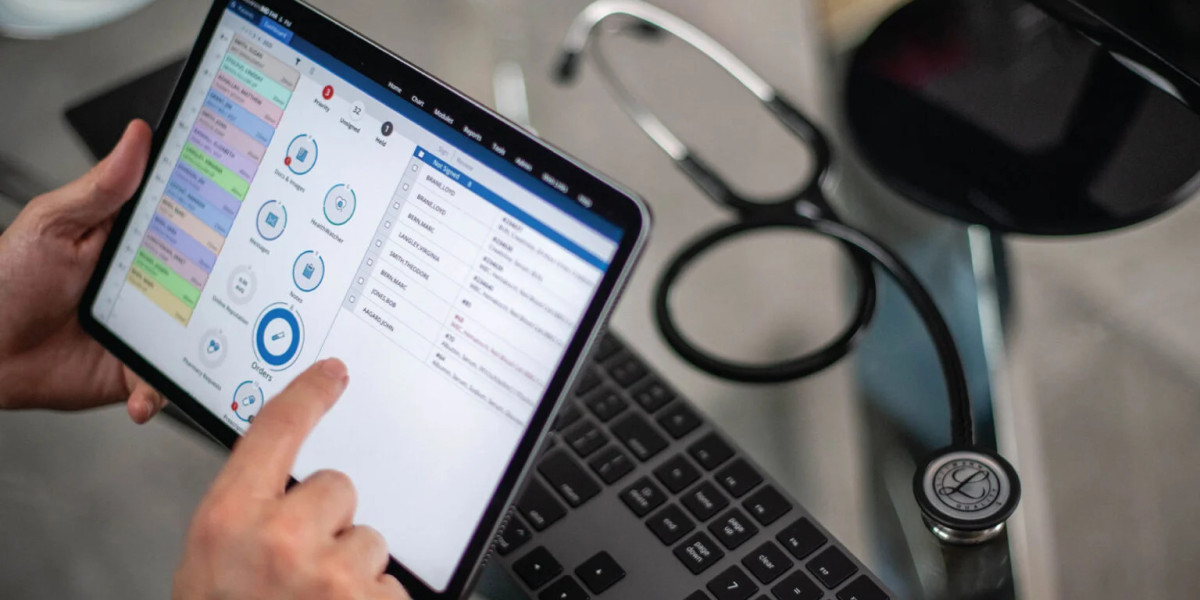In recent years, hospitals worldwide have been undergoing a profound transformation. The driving force behind this change isn’t just new medical discoveries it’s technology. From electronic health records to artificial intelligence and robotic surgeries, digital innovation is redefining how healthcare is delivered, managed, and experienced. This global digital shift has not only improved patient outcomes but also enhanced operational efficiency, reduced human error, and made healthcare more accessible than ever before.
The Global Push Toward Digital Healthcare
The world has entered an era where data and technology shape every industry and healthcare is no exception. The COVID-19 pandemic accelerated this transition, pushing hospitals to adopt telemedicine, remote monitoring, and cloud-based systems at unprecedented speed. Governments, tech companies, and healthcare providers now recognize that digital transformation isn’t a luxury it’s a necessity.
In countries like the United States, the United Kingdom, and Singapore, digital healthcare frameworks are being integrated into national health policies. Meanwhile, developing countries are rapidly adopting affordable tech solutions to improve access to care in rural and underserved areas. The result is a healthcare ecosystem that is smarter, faster, and more connected than ever before.
Electronic Health Records: The Foundation of the Digital Hospital
One of the most fundamental changes in hospital operations has been the shift from paper-based files to Electronic Health Records (EHRs). These digital systems allow doctors, nurses, and administrative staff to access patient data instantly and securely.
Instead of flipping through stacks of medical charts, clinicians can now view a patient’s complete history lab results, medications, allergies, and previous visits in seconds. This streamlined access enhances coordination between departments, reduces errors, and ensures that patients receive personalized, accurate care.
Moreover, EHRs enable hospitals to analyze large volumes of data to identify trends, forecast patient needs, and improve decision-making. For example, predictive analytics can alert healthcare providers to potential complications before they occur, improving outcomes and saving lives.
Telemedicine: Bridging Distance and Time
The rise of telemedicine has been one of the most remarkable digital revolutions in healthcare. Through video consultations and online health platforms, patients can now connect with specialists without stepping outside their homes.
Hospitals across the globe have integrated telehealth services to manage follow-up appointments, mental health counseling, and even chronic disease monitoring. This has not only improved patient convenience but also reduced hospital overcrowding and lowered healthcare costs.
For patients in remote or rural areas, telemedicine has become a lifeline. In countries where healthcare access was previously limited, digital communication tools now enable timely diagnosis and treatment, eliminating geographical barriers to care.
Artificial Intelligence: The Brain Behind the Transformation
Artificial intelligence (AI) is revolutionizing how hospitals diagnose, treat, and manage patients. From reading X-rays and MRI scans to predicting disease outbreaks, AI systems can process and interpret complex medical data far faster than humans.
For example, AI-powered diagnostic tools can detect cancer, heart disease, or pneumonia from imaging results with astonishing accuracy. Hospitals use machine learning algorithms to personalize treatment plans, monitor patients in real time, and even automate administrative tasks such as scheduling or billing.
This integration of AI not only reduces workload for healthcare professionals but also increases precision and consistency in medical decision-making.
Internet of Medical Things (IoMT): Connecting Devices and Data
The Internet of Medical Things (IoMT) refers to the interconnected network of medical devices and software systems that collect and share health data. Smartwatches, glucose monitors, heart rate trackers, and connected ventilators all contribute to this digital ecosystem.
Hospitals leveraging IoMT can monitor patient vitals remotely, track recovery progress, and receive alerts in case of emergencies. This real-time data exchange allows clinicians to make proactive decisions rather than reactive ones preventing complications before they escalate.
For instance, a patient recovering from heart surgery can wear a connected device that sends live updates to their doctor, ensuring any abnormal signs are detected immediately.
Cloud Computing and Data Security
With all this data being generated, hospitals need secure and scalable storage solutions and that’s where cloud computing comes in. Cloud-based systems allow healthcare institutions to store, manage, and analyze data efficiently without maintaining bulky physical servers.
Beyond convenience, cloud platforms enhance collaboration between hospitals, clinics, and laboratories. A specialist in one city can access a patient’s reports uploaded from another location in real time, enabling faster and more coordinated care.
However, digital transformation also brings challenges, especially in data privacy and cybersecurity. Hospitals are investing heavily in encryption, multi-factor authentication, and AI-driven threat detection to protect sensitive patient information from cyberattacks.
Robotics and Automation in Healthcare
Automation and robotics are changing how surgeries, rehabilitation, and hospital logistics are performed. Robotic-assisted surgeries, for example, enable doctors to perform complex operations with greater precision and minimal invasiveness.
Automated pharmacy systems dispense medications accurately, reducing the risk of human error. Meanwhile, delivery robots in hospitals transport supplies, food, and even samples between departments, freeing up staff for more critical tasks.
This blend of robotics and automation is not replacing humans it’s enhancing their capabilities and allowing them to focus on patient care rather than repetitive administrative work.
The Future: Smart Hospitals and Predictive Care
The ultimate goal of digital transformation is to create smart hospitals fully integrated facilities that use AI, IoMT, cloud computing, and automation to provide predictive and personalized care.
Imagine a hospital where sensors track patient movements to prevent falls, AI predicts which patients are at risk of readmission, and digital twins simulate treatment outcomes before procedures. This is no longer science fiction it’s the next phase of global healthcare evolution.
As hospitals continue to adopt these technologies, they’re not only improving patient outcomes but also setting new standards for sustainability, efficiency, and accessibility.
Conclusion
The digital shift sweeping through hospitals across the globe is more than a technological upgrade it’s a healthcare revolution. By integrating tools like AI, telemedicine, Clinic Management Software, EHRs, and IoMT, hospitals are becoming more efficient, transparent, and patient-centered than ever before.
This transformation is paving the way for a future where care is not just reactive but predictive where technology and compassion work hand in hand to deliver healthier outcomes for everyone.








